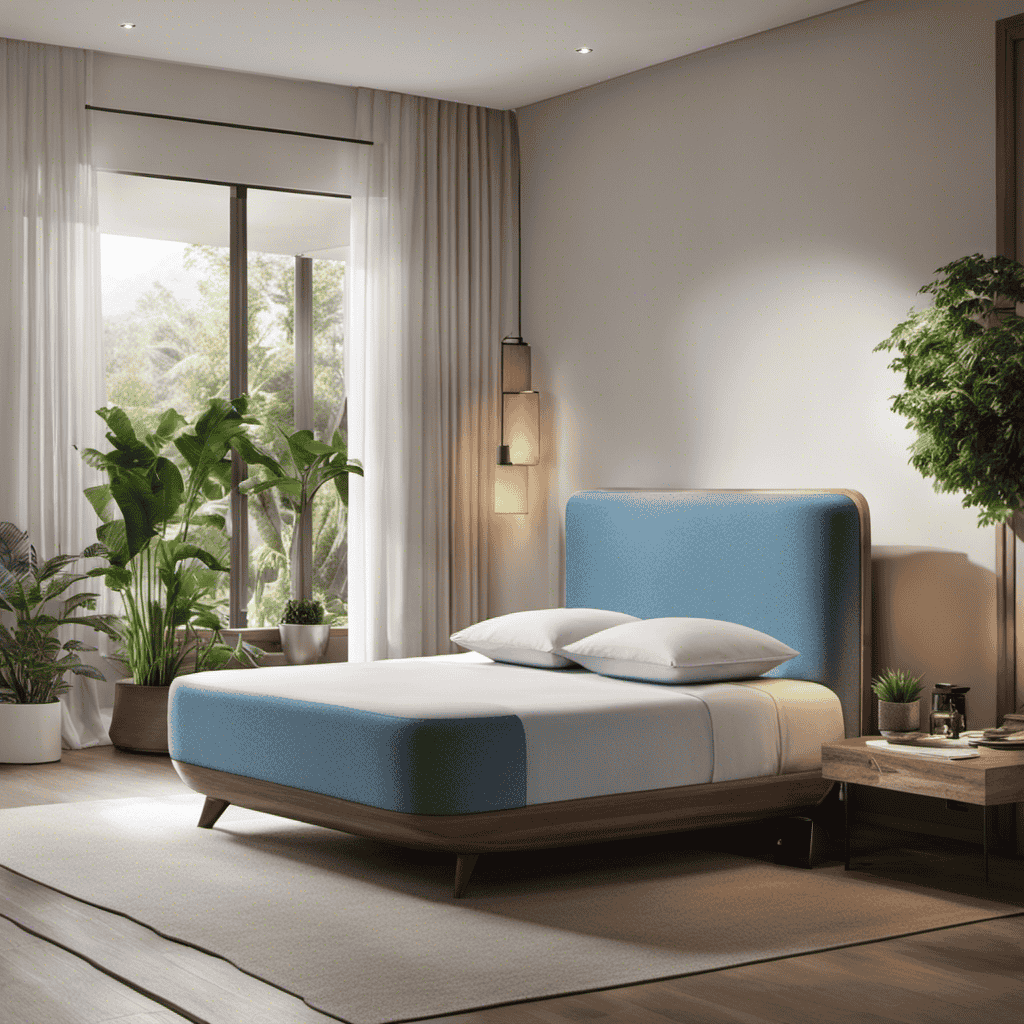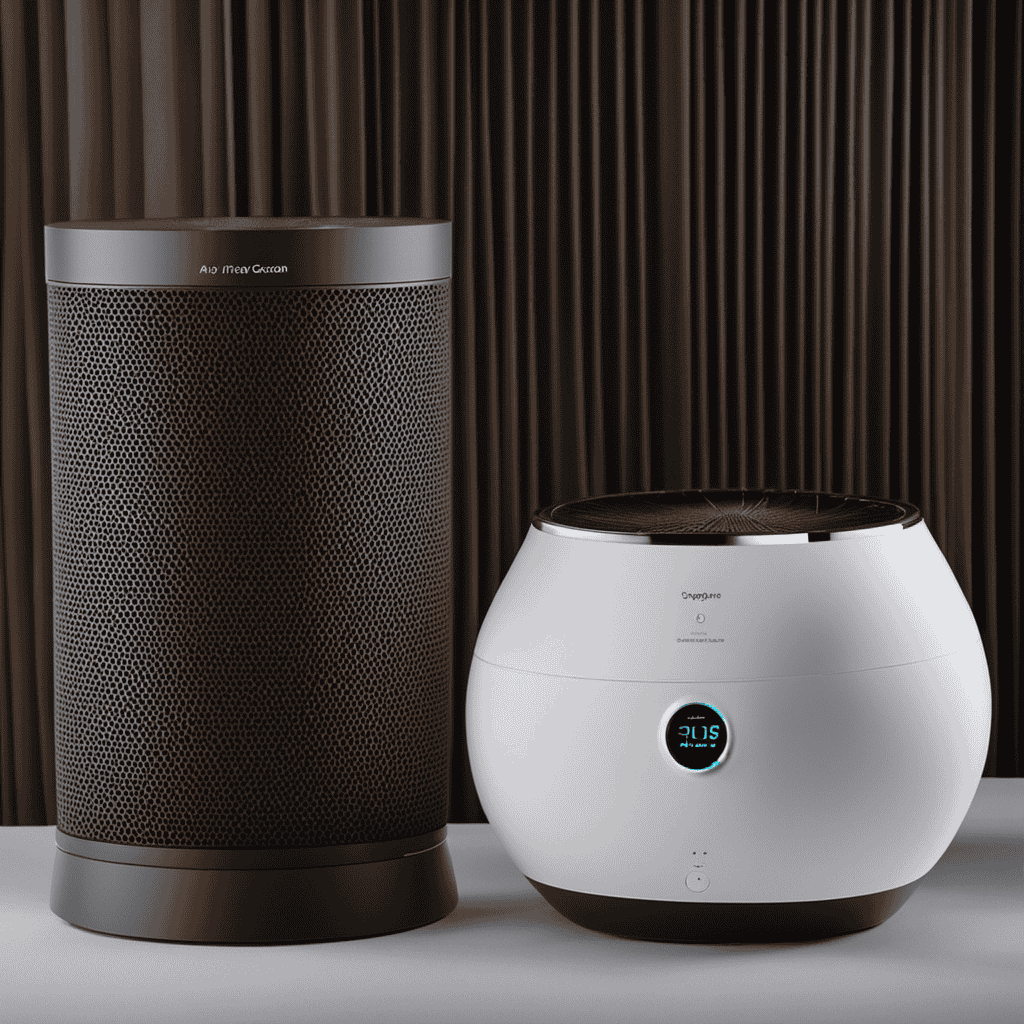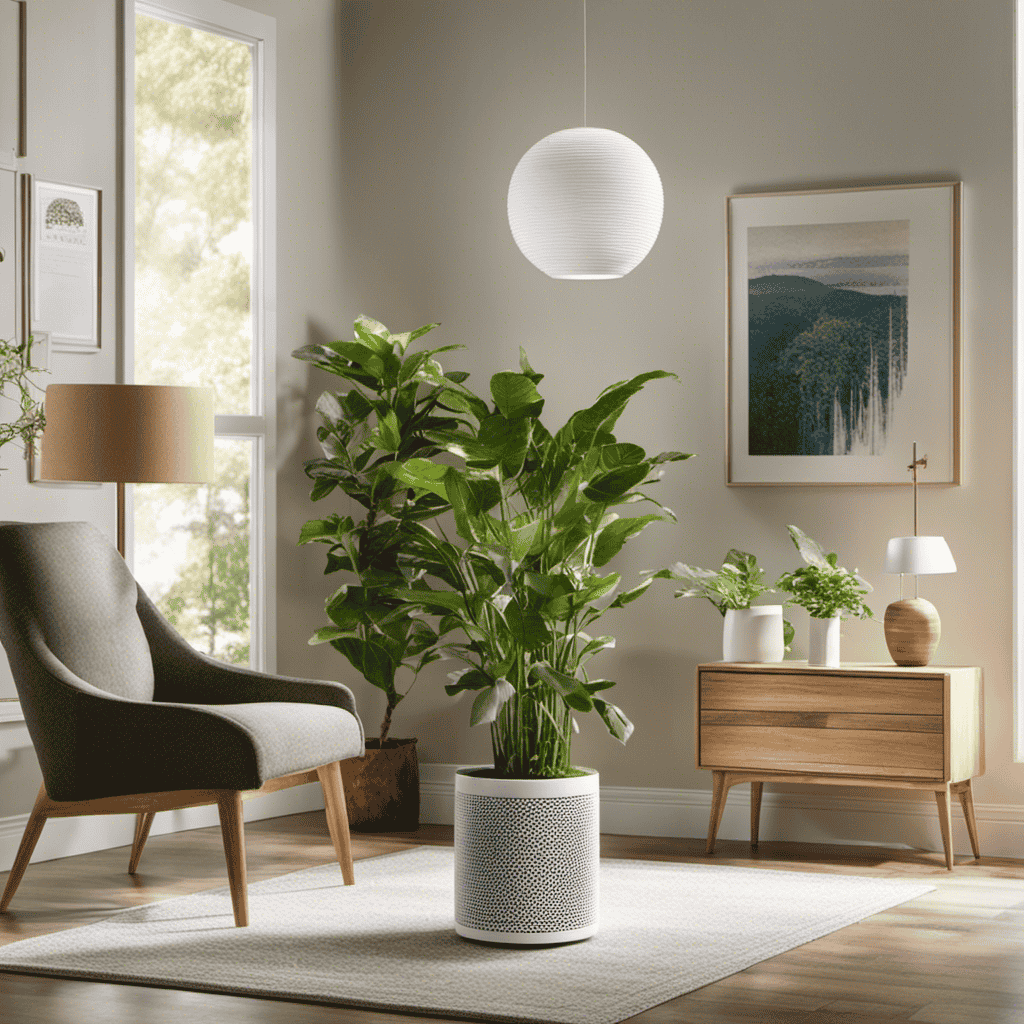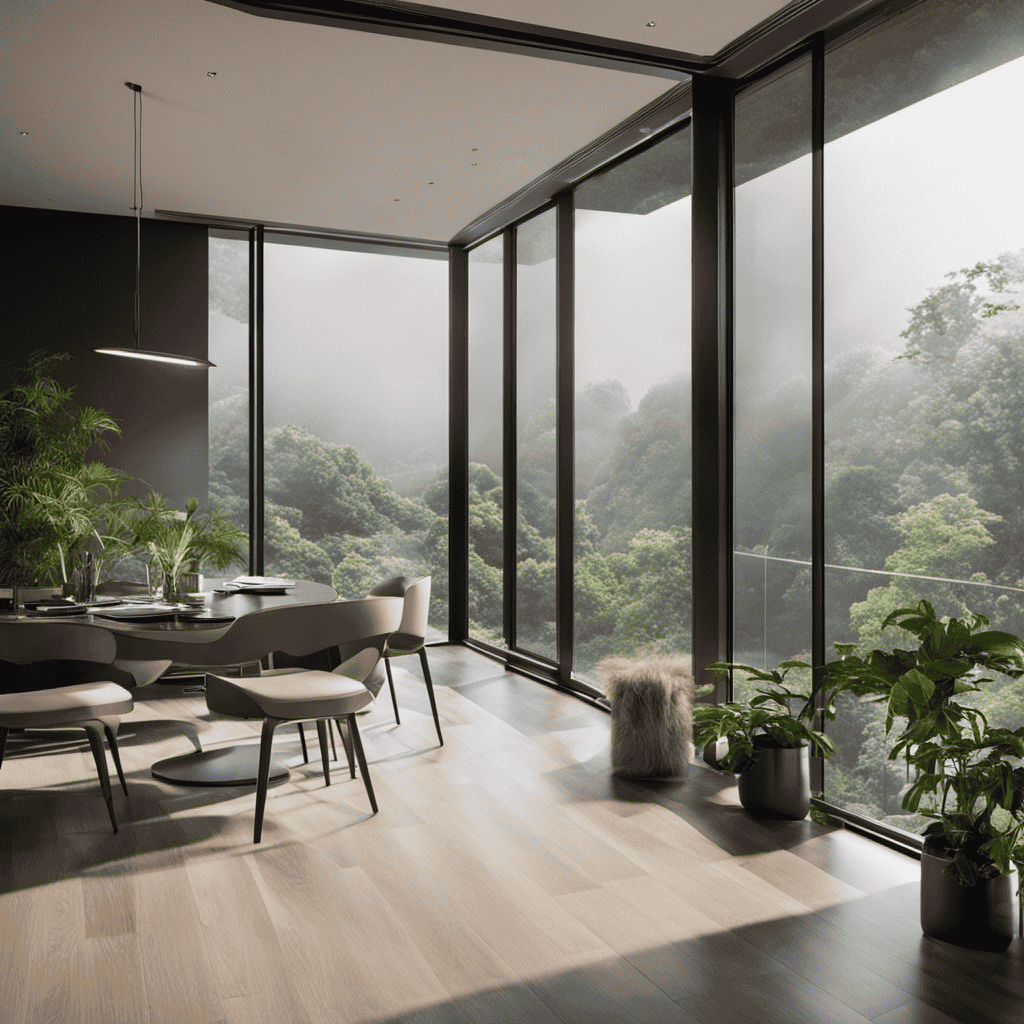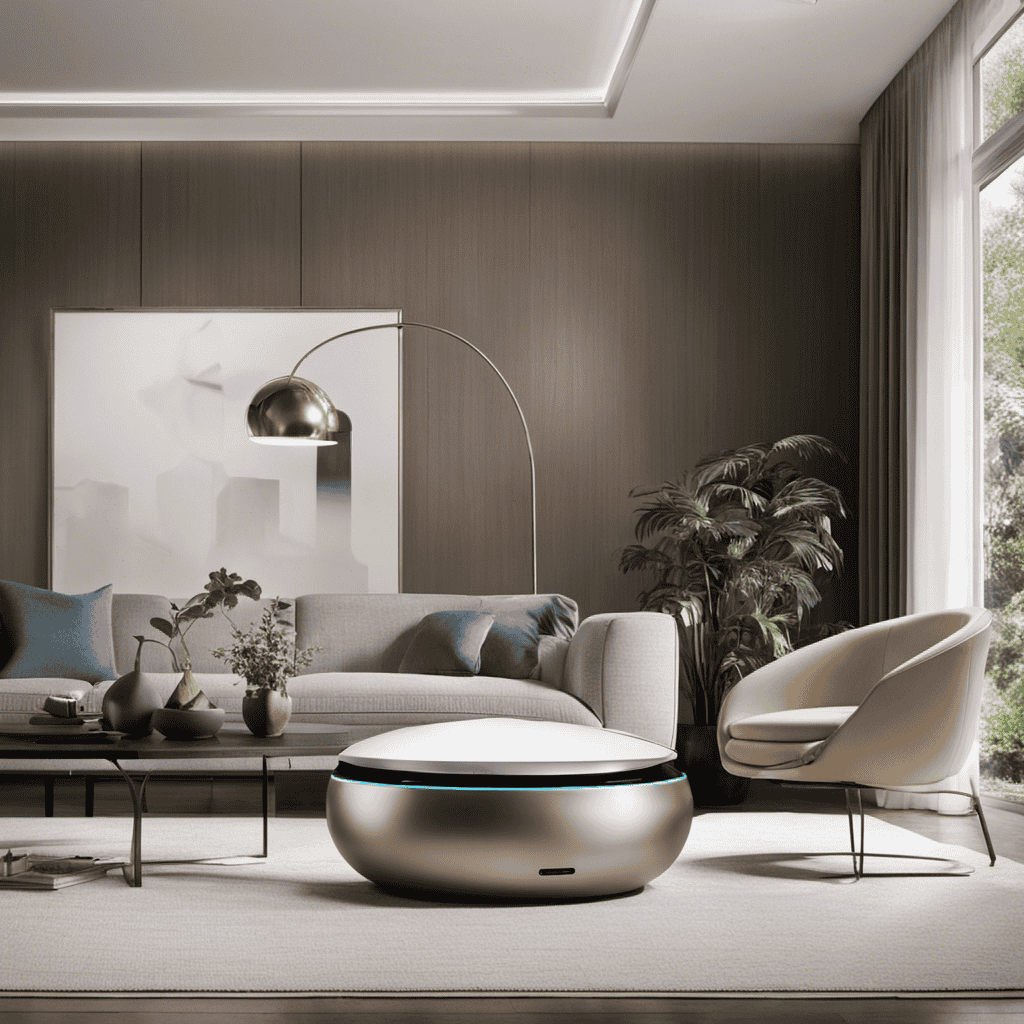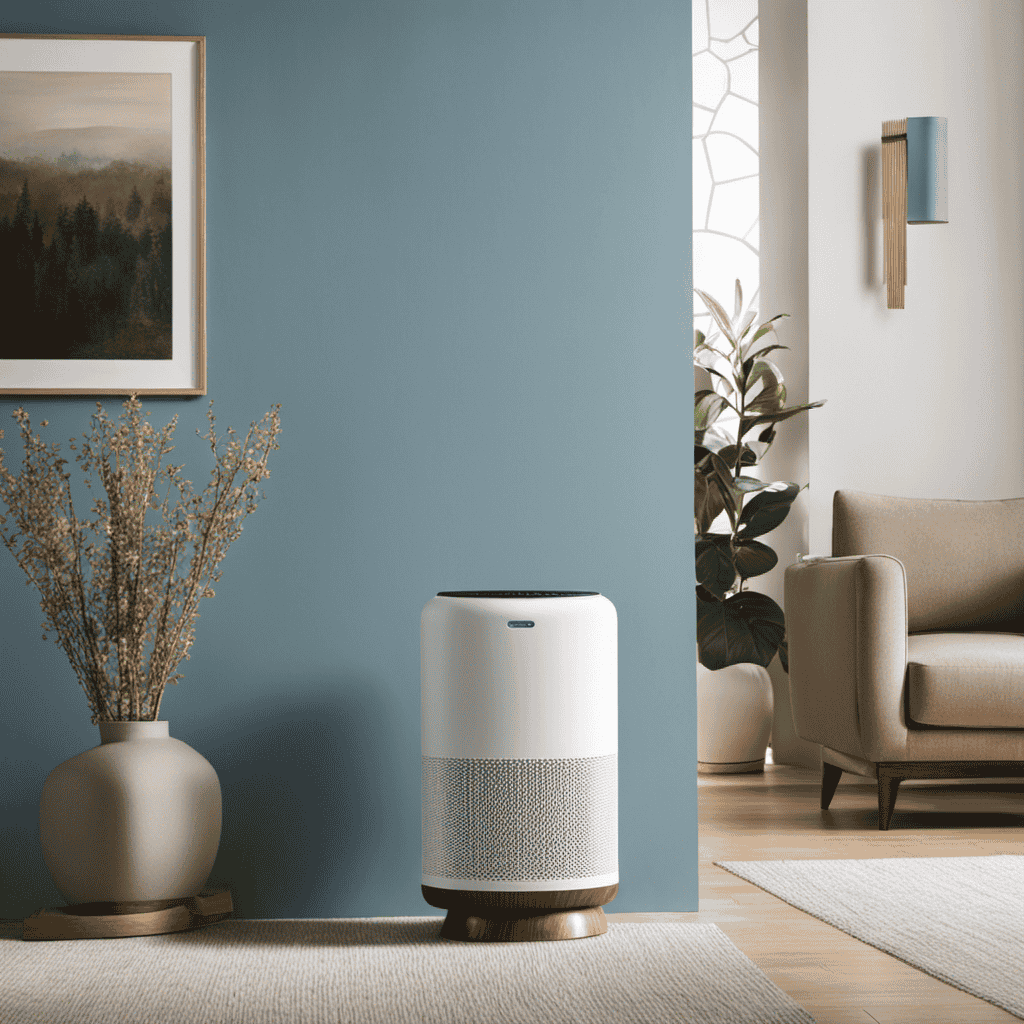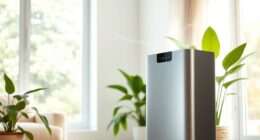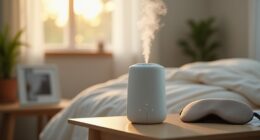Being someone who suffers from asthma, I understand from personal experience how crucial it is to find the most suitable air purifier to help control this ailment. Given the vast array of choices on the market, it can be quite challenging to identify which air purifier is genuinely beneficial.
That’s why I’ve done the research for you and compiled a comprehensive guide on what to look for in an asthma-friendly air purifier. From key features to real-life testimonials, this article will provide you with the knowledge and expertise needed to make an informed decision.
So, let’s dive in and find the perfect air purifier to bring relief to your asthma symptoms.
Key Takeaways
- Asthma triggers include allergens like dust mites, pollen, and pet dander, as well as irritants like cigarette smoke and air pollution.
- Air purifiers with HEPA filters can effectively remove allergens and pollutants from the air, reducing the risk of asthma attacks.
- Choosing the right air purifier with a high CADR rating and HEPA filter can provide relief for asthma sufferers and create a healthy environment for managing symptoms.
- Clean air not only improves respiratory health but also promotes better sleep, increased energy levels, and enhanced concentration. Investing in air purifiers and regular cleaning can create a clean and healthy living environment.
Understanding Asthma: Causes and Triggers
If you have asthma, it’s important to understand the causes and triggers of your condition. Asthma is a chronic respiratory disease that affects the airways, causing them to become inflamed and narrow.
The exact causes of asthma are still unknown, but it is believed to be a combination of genetic and environmental factors. Common triggers for asthma attacks include allergens like dust mites, pollen, and pet dander, as well as irritants such as cigarette smoke, air pollution, and strong odors.
To prevent asthma attacks, it is crucial to identify and avoid these triggers. One way to do this is by ensuring clean air in your surroundings. Using air purifiers with HEPA filters can help remove allergens and pollutants from the air, providing numerous benefits for individuals with asthma.
The Importance of Air Purification for Asthma Management
As someone who has struggled with asthma for years, I understand the importance of identifying and preventing triggers to manage the condition effectively.
One crucial factor in managing asthma is ensuring clean air, as it reduces the risk of triggering an attack.
Choosing the right air purifier is essential in creating a healthy environment, as it can effectively remove allergens and pollutants from the air, providing much-needed relief for asthma sufferers.
Asthma Triggers and Prevention
To prevent asthma triggers, make sure you’re regularly cleaning your living environment and avoiding potential allergens. Identifying and eliminating triggers is crucial in managing asthma symptoms and preventing flare-ups. Here are some preventive measures to consider:
-
Dust regularly: Dust mites are a common trigger for asthma, so it’s important to clean your home frequently, especially areas where dust tends to accumulate, such as carpets, curtains, and upholstery.
-
Keep the air clean: Use air purifiers with HEPA filters to remove allergens and pollutants from the air. These filters can capture tiny particles, including pet dander, pollen, and mold spores.
-
Control humidity: High humidity can promote the growth of mold and dust mites. Use dehumidifiers or air conditioners to maintain a humidity level below 50%.
-
Avoid smoking: Tobacco smoke is a powerful trigger for asthma. Quitting smoking and avoiding secondhand smoke can significantly improve your respiratory health.
-
Be cautious with pets: If you’re allergic to pet dander, consider keeping pets out of your bedroom and regularly grooming them to minimize allergens.
Benefits of Clean Air
You’ll notice a significant improvement in your breathing and overall respiratory health when you have clean air in your living environment. The benefits of clean air are immense, and it’s crucial to prioritize improving air quality in your home.
Clean air reduces the risk of respiratory issues, allergies, and asthma attacks. When the air is free from pollutants, such as dust, pollen, and pet dander, it becomes easier to breathe. This can lead to better sleep, increased energy levels, and enhanced concentration.
Clean air also promotes a healthier immune system and reduces the chances of developing respiratory illnesses. By investing in air purifiers, proper ventilation, and regular cleaning, you can create a clean and healthy living environment for yourself and your loved ones.
Choosing the Right Purifier
When choosing a purifier, consider the size of the room and your specific needs. Purifier efficiency is crucial in ensuring that the air you breathe is clean and free from allergens. Here are some factors to consider:
-
CADR (Clean Air Delivery Rate): Look for a purifier with a high CADR rating, as it indicates how quickly the purifier can filter the air in a room.
-
Filtration system: Opt for a purifier with a HEPA filter, which can capture particles as small as 0.3 microns.
-
Noise levels: Check the decibel rating of the purifier, especially if you plan to use it in your bedroom or office.
-
Coverage area: Ensure that the purifier is suitable for the size of the room you intend to use it in.
-
Additional features: Consider features like air quality sensors, auto mode, and timer functions for added convenience.
Key Features to Look for in an Asthma-Friendly Air Purifier
Consider choosing an air purifier with a HEPA filter to effectively remove asthma triggers from your indoor air.
When it comes to finding an asthma-friendly air purifier, there are several key features to consider.
First, look for a purifier with a high CADR (Clean Air Delivery Rate) rating, as this indicates its ability to filter and circulate air effectively.
Additionally, consider a purifier with a pre-filter to capture larger particles, such as pet dander or dust, before they reach the HEPA filter.
Another important feature is an activated carbon filter, which can help eliminate odors and chemicals that may worsen asthma symptoms.
Lastly, choose a purifier with a quiet operation and a timer function, allowing you to customize its usage and ensure a peaceful environment.
Comparing Different Types of Air Purifiers for Asthma
When it comes to choosing an air purifier for asthma, there are several key factors to consider.
One important aspect is the filter effectiveness comparison between different types of air purifiers. It’s essential to understand how well each type of filter can remove allergens and irritants from the air, such as dust mites, pet dander, and pollen.
Additionally, cost and maintenance considerations play a significant role in the decision-making process. The initial cost of the air purifier, as well as the ongoing expenses for filter replacements and energy consumption, should be taken into account to ensure a cost-effective and manageable solution for asthma sufferers.
Filter Effectiveness Comparison
The HEPA filter is more effective than the activated carbon filter for removing allergens and pollutants from the air. When it comes to addressing specific concerns like dust mite allergies and pet dander reduction, the HEPA filter is the superior choice. Here are five reasons why:
- HEPA filters can capture particles as small as 0.3 microns, trapping dust mites and their allergens effectively.
- The dense fiber structure of HEPA filters ensures that pet dander, which can trigger allergies, is trapped and removed from the air.
- HEPA filters are designed to remove airborne bacteria and viruses, providing a cleaner and healthier environment.
- The high efficiency of HEPA filters means they can remove up to 99.97% of particles from the air, including pollen and mold spores.
- HEPA filters are more versatile, as they can be combined with other filter technologies for comprehensive air purification.
Considering these benefits, it is clear that the HEPA filter is the ideal choice for those seeking relief from dust mite allergies and pet dander.
However, it is essential to also consider cost and maintenance considerations when selecting an air purifier.
Cost and Maintenance Considerations
To keep your air purifier running efficiently, you’ll need to regularly clean or replace the filters. Some models may require more frequent filter changes, which can increase maintenance expenses over time. When considering the cost of an air purifier, it’s important to factor in the cost of filter replacement as well. It’s also worth noting that some air purifiers have washable filters, which can help reduce long-term costs.
To minimize maintenance and extend the life of your filters, it’s recommended to vacuum them regularly to remove any accumulated dust or debris. Additionally, placing the air purifier in a clean, well-ventilated area can help reduce the amount of pollutants it needs to filter, further prolonging the lifespan of the filters.
Top 5 Air Purifiers Recommended for Asthma Sufferers
You should consider the top 5 air purifiers recommended for asthma sufferers. When looking for an air purifier, it’s important to consider the features that will be most beneficial for those with asthma.
Here are some recommended air purifier brands that offer excellent options for asthma sufferers:
-
1. Dyson Pure Cool Link: This purifier not only removes allergens and pollutants but also cools the air, making it ideal for year-round use.
-
2. Honeywell True HEPA Allergen Remover: This air purifier features a True HEPA filter that captures 99.97% of airborne particles, including pollen, pet dander, and dust mites.
-
3. Blueair Classic 605: With its high-performance HEPASilent technology, this purifier efficiently removes allergens and asthma triggers from the air.
-
4. Coway AP-1512HH Mighty Air Purifier: This compact purifier features a multi-stage filtration system that effectively eliminates pollutants and odors.
-
5. Levoit LV-PUR131: This purifier offers a three-stage filtration system and a smart auto mode that adjusts the fan speed based on air quality.
These air purifiers provide exceptional performance and are highly recommended for asthma sufferers.
Now, let’s move on to discussing how to choose the right size and placement for an air purifier.
How to Choose the Right Size and Placement for an Air Purifier
When considering the size and placement of an air purifier, it’s important to take into account the square footage of the room and the location of potential allergen sources.
Choosing the right air purifier for your needs can greatly improve the air quality in your home, especially for individuals with allergies or asthma. The size of the air purifier should correspond to the square footage of the room it will be placed in. A larger room would require a more powerful air purifier to effectively clean the air.
Additionally, proper placement is crucial for optimal performance. It’s recommended to place the air purifier in a central location, away from walls and furniture, to ensure maximum air circulation. Avoid placing it near potential allergen sources, such as pet beds or smoking areas.
Taking these factors into consideration will help you select the right air purifier and ensure its proper placement for effective air purification.
Maintenance Tips for Keeping Your Air Purifier Effective
After choosing the right size and placement for your air purifier, it’s important to maintain it properly to ensure its effectiveness in purifying the air. Here are some tips to help you keep your air purifier working efficiently:
-
Clean or replace the filters regularly: Dirty filters can reduce the purifier’s effectiveness. Check the manufacturer’s instructions for the recommended cleaning or replacement schedule.
-
Keep the exterior clean: Dust and dirt can accumulate on the exterior of the purifier, affecting its performance. Wipe it down regularly with a damp cloth.
-
Vacuum the surrounding area: Regularly vacuuming the area around the purifier can help prevent dust and allergens from accumulating and potentially getting into the purifier.
-
Avoid smoking near the purifier: Smoke can clog the filters and reduce the effectiveness of the purifier. Keep the purifier away from smoking areas.
-
Monitor the air quality: Use a separate air quality monitor to keep track of the indoor air quality and adjust the purifier settings accordingly.
Real-Life Testimonials: Asthma Relief With Air Purifiers
Looking for real-life testimonials? Check out how air purifiers have provided relief for individuals living with asthma.
As someone who has struggled with asthma for years, finding an effective solution was crucial for improving my quality of life. I decided to invest in an air purifier after hearing positive experiences from others with similar respiratory issues.
The results have been remarkable. The air purifier not only removes allergens and pollutants from the air but also reduces the triggers that can cause asthma attacks. I can now breathe easier, sleep better, and enjoy a more comfortable environment.
The effectiveness of air purifiers in managing asthma symptoms cannot be overstated. It has truly been a game-changer for me and has made a significant difference in my daily life.
Additional Asthma Management Techniques to Combine With Air Purification
To enhance your asthma management, you might consider incorporating other techniques alongside air purification. While air purifiers can help remove allergens and irritants from the air, there are alternative therapies and breathing exercises that can further improve your symptoms.
Here are five additional techniques to consider:
-
Acupuncture: This traditional Chinese medicine practice involves the insertion of thin needles into specific points on the body to promote balance and relieve symptoms.
-
Yoga: Practicing yoga can help improve lung function, increase flexibility, and reduce stress, all of which can benefit asthma management.
-
Herbal remedies: Certain herbs, such as ginger and turmeric, have anti-inflammatory properties that may help reduce asthma symptoms when used in conjunction with prescribed medications.
-
Breathing exercises: Techniques like diaphragmatic breathing and pursed lip breathing can help strengthen respiratory muscles and improve overall lung function.
-
Salt therapy: Also known as halotherapy, this alternative therapy involves inhaling salt particles, which may help reduce airway inflammation and improve breathing.
Incorporating these techniques alongside air purification can provide a holistic approach to managing your asthma symptoms. Remember to consult with your healthcare provider before starting any new therapies or exercises.
Frequently Asked Questions
Are Air Purifiers the Only Solution for Managing Asthma?
Air purifiers are not the only solution for managing asthma. There are alternative solutions and lifestyle changes that can also help, such as reducing exposure to triggers, maintaining a clean home, and practicing good respiratory hygiene.
Can Air Purifiers Completely Eliminate Asthma Triggers?
Air purifiers can greatly reduce asthma triggers by effectively filtering out airborne particles and allergens. They provide numerous benefits, including improved air quality, reduced symptoms, and a healthier living environment.
Can Air Purifiers Worsen Asthma Symptoms?
Air purifiers can worsen asthma symptoms due to potential side effects. It’s important to consider their effectiveness in reducing asthma triggers. However, with proper research and choosing the right purifier, it can help alleviate symptoms.
How Often Should I Replace the Filters in an Air Purifier for Asthma?
When it comes to air purifiers for asthma, knowing the replacement frequency of filters is crucial. It ensures cost effectiveness and optimal performance. So, how often should I replace the filters?
Can I Use an Air Purifier in Multiple Rooms to Manage My Asthma?
Using air purifiers in multiple rooms can be an effective way to manage asthma. However, it’s important to consider the cost of purchasing and maintaining multiple units, as well as ensuring proper placement for maximum efficiency.
Can the Best Air Purifier for Home Use Also Help with Asthma?
Yes, the best air purifier for home use can definitely help with asthma. This device removes allergens and particles from the air, providing a cleaner environment for those with asthma. Look for a best air purifier home use with HEPA filters to effectively reduce asthma triggers in your home.
Conclusion
In conclusion, finding the best air purifier for asthma is crucial in managing the condition and improving air quality.
By understanding the causes and triggers of asthma, we can choose an asthma-friendly air purifier with key features like HEPA filters and activated carbon.
Comparing different types of air purifiers and considering size and placement is essential.
Maintenance ensures the effectiveness of the air purifier.
By combining air purification with other asthma management techniques, individuals can experience real relief.
Remember, taking control of your environment is key to managing asthma effectively.
